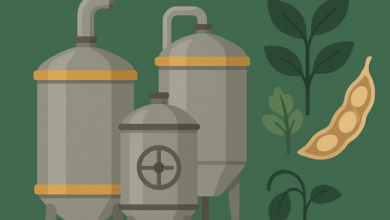Contact Lens Recycling Programs: Reducing Environmental Impact

The contact lens industry faces growing environmental scrutiny as billions of single-use lenses and their packaging materials contribute to plastic waste streams worldwide. With over 45 million Americans wearing contact lenses and global usage continuing to expand, innovative recycling programs are emerging to address the environmental footprint of modern vision correction.
The Scale of Contact Lens Waste
Daily disposable contact lenses generate substantial waste volumes that traditional recycling systems cannot process effectively. Each lens weighs only a few milligrams, but collective usage creates thousands of tons of specialized plastic waste annually that requires dedicated handling and processing solutions.
Contact lens packaging adds complexity to waste management challenges through multi-material blister packs combining plastics, foil barriers, and adhesive components. These composite materials resist separation using conventional recycling methods, leading most packaging to end up in landfills rather than material recovery streams.
Research indicates that approximately 20% of contact lens users flush used lenses down drains, introducing microplastics into wastewater systems and potentially marine environments. This disposal method creates environmental contamination that persists for decades while contributing to growing microplastic pollution concerns.
The environmental impact extends beyond disposal to include manufacturing energy consumption, transportation emissions, and packaging material production. Comprehensive sustainability approaches must address the entire product lifecycle rather than focusing solely on end-of-life disposal methods.
Manufacturer-Led Recycling Initiatives
Major contact lens manufacturers have launched collection programs that provide convenient disposal options while demonstrating corporate environmental responsibility. These programs typically involve partnerships with specialized recycling companies that can process lens materials effectively.
Bausch + Lomb’s ONE by ONE Recycling Program accepts used lenses and packaging from any manufacturer, providing prepaid shipping labels and collection boxes for consumer convenience. This industry-leading initiative processes materials into new plastic products while educating consumers about proper disposal methods.
CooperVision has developed sustainable packaging initiatives including biodegradable blister materials and reduced packaging volumes that minimize environmental impact. Their research focuses on developing lens materials that maintain performance characteristics while improving end-of-life biodegradability.
Johnson & Johnson Vision Care integrates sustainability messaging into their Acuvue brand communications while supporting research into environmentally responsible lens materials and packaging alternatives. Their efforts include consumer education campaigns promoting responsible disposal practices.
contactlensmarketplace.com supports these recycling initiatives by providing information about manufacturer programs and encouraging customers to participate in waste reduction efforts while maintaining access to the latest lens technologies.
Collection and Processing Methods
Successful contact lens recycling requires specialized collection systems that separate tiny lenses from packaging materials while handling the logistics of processing small-volume, distributed waste streams. Current programs utilize mail-back systems and retail collection points to aggregate materials efficiently.
Collection boxes placed in eye care offices and retail locations provide convenient disposal points for consumers while building awareness about recycling options. These programs often include educational materials that explain proper lens removal and storage procedures before recycling submission.
Processing facilities use advanced sorting technologies to separate different plastic types and remove contaminants that could compromise recycling quality. The small size and varied materials in contact lens waste streams require specialized equipment and procedures not found in standard recycling facilities.
Material recovery focuses on converting waste plastics into new products including park benches, outdoor furniture, and industrial components. While lens materials cannot currently be recycled back into new contact lenses, they provide valuable input for other plastic manufacturing applications.
Consumer Participation and Education
Effective recycling programs depend on consumer participation and proper waste preparation that ensures collected materials can be processed successfully. Education campaigns help users understand recycling procedures while building environmental awareness about contact lens waste impact.
Proper lens preparation for recycling involves removing lenses from solution, allowing them to dry, and packaging them appropriately for collection. Some programs provide specific containers or bags that facilitate processing while preventing contamination during transportation.
Packaging recycling requires separating foil components from plastic blisters when possible, though many programs accept composite packaging materials for specialized processing. Clear instructions help consumers prepare materials correctly while maximizing recycling effectiveness.
Behavior change initiatives encourage users to avoid flushing lenses while promoting participation in organized recycling programs. Social media campaigns and professional office education help spread awareness about environmental impact and available disposal alternatives.
Environmental Benefits and Impact Measurement
Contact lens recycling programs generate measurable environmental benefits through waste diversion, material recovery, and pollution prevention. Quantifying these impacts helps justify program costs while demonstrating progress toward sustainability goals.
Waste diversion calculations show significant reductions in landfill disposal volumes when recycling programs achieve meaningful participation rates. Even modest participation levels can divert thousands of pounds of specialized plastic waste from traditional disposal streams annually.
Material recovery enables production of new products using recycled content rather than virgin plastics, reducing overall environmental impact through resource conservation and energy savings. Life cycle analyses demonstrate net environmental benefits despite transportation and processing energy requirements.
Microplastic reduction represents a crucial but difficult-to-quantify benefit of proper lens disposal programs. Preventing lens flushing reduces wastewater contamination while protecting aquatic ecosystems from persistent plastic pollution that bioaccumulates through food chains.
Carbon footprint analyses help optimize collection and processing logistics while identifying opportunities for further environmental impact reductions. These assessments guide program improvements and support corporate sustainability reporting requirements.
Future Innovations and Technology Development
Next-generation contact lens materials focus on biodegradability and compostability that could eliminate recycling requirements while maintaining optical performance and safety standards. Research initiatives explore bio-based polymers and additives that accelerate decomposition in appropriate environments.
Smart packaging designs incorporate separation features that simplify recycling preparation while reducing composite material usage. These innovations could significantly improve recycling rates by making proper disposal more convenient for consumers.
Extended producer responsibility regulations may require manufacturers to fund collection and processing programs while meeting specific recycling rate targets. These policy frameworks create economic incentives for sustainable design while ensuring adequate funding for waste management infrastructure.
Closed-loop recycling technology development aims to enable lens-to-lens material recovery that would create truly circular production systems. While technically challenging, these advances could transform contact lens sustainability by eliminating virgin material requirements.
Building Sustainable Contact Lens Practices
Contact lens recycling represents an important step toward sustainable vision correction that balances environmental responsibility with optical performance and user convenience. Successful programs require cooperation between manufacturers, retailers, eye care professionals, and consumers to achieve meaningful waste reduction.
Consumer education and convenient participation options drive program success while building environmental awareness that extends beyond contact lens disposal to broader sustainability practices. Professional office involvement provides trusted information sources while demonstrating industry commitment to environmental stewardship.
The evolution toward sustainable contact lens practices benefits from technological innovation, policy support, and consumer demand for environmentally responsible products. As recycling programs mature and expand, they provide models for addressing plastic waste challenges across other disposable product categories.
Participation in contact lens recycling programs enables users to maintain their preferred vision correction methods while contributing to environmental protection efforts. These initiatives demonstrate that individual actions, when aggregated through organized programs, can generate meaningful environmental benefits that support broader sustainability goals.




